Welcome to Reflections.
These posts will feature photo essays about previous times and trips in my life. I have the ambitious goal of posting one of these every month, however not sure how long that will last. I’m starting this section by posting some previously written essays that I wrote in 2017 and published on my previous photo blog. You can learn more about that here.
Having only recently taken up cycling avidly in the last three years or so in Winnipeg, I tend to solely associate cycling and ideas that come along with it - active transportation, sustainable living - with my North American context.
For most of my life, my context was the small, but dense city of Macau. The city was small enough that I walked everywhere or caught a bus. I biked around a couple of times, but for a variety of reasons, proper transit, humid climate, biking wasn’t really a a feasible or enticing mode of transit. Just 60 kilometres east of Macau is Hong Kong. With its population of 7 million congregated mostly on Hong Kong Island and the new territories (which is connected to mainland china), it also consists of over 250 islands ranging from all sorts of shapes and sizes.
In a recent conversation with my parents, we were discussing one of these islands, Cheng Chau, an annual family vacation spot growing up. I came to the realization that my recent fascinations over a hypothetical bike based society, aren’t hypothetical. That society exists on Cheng Chau. It’s an island of bikes.
Cheng Chau Island or 長洲 (literally translated as "Long Island") is 16 km away from Victoria Harbour, the epicentre of Hong Kong. Located in the southwest corner of Hong Kong, this dumbbell shaped island is about 2.5 km squared and has a population of over 20,000. Considering the population size, there is still a lot of greenery on the island, with most of the island's population tightly packed together in the centre of the island in apartment blocks about three or four stories tall.
Given these geographic limitations, cars are banned, making bicycles not only the most viable mode of transportation, but also the only legal one. Exceptions are made for essential service vehicles (firetruck, ambulance, etc.), but even these vehicles are tiny, especially when compared to their North American counterparts. They make only brief appearances in the bike-filled narrow roads and alleyways.
All of this makes Cheng Chau a time capsule of a pre-auto world. It isn’t that riding a bicycle is a lifestyle choice, or an environmentally sustainable practice, it’s just the way you get around. That or walking. In Cheng Chau, there isn’t any “bike friendly” infrastructure or a recent return to a bike culture, like the bike meccas of Amsterdam or Copenhagen. There has never a return because there was never a departure from the bicycle.
No wonder I feel so happy thinking about Cheng Chau and my vacations there.
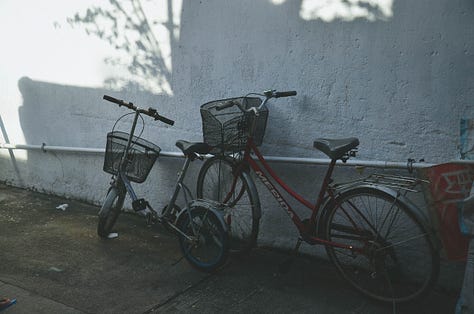
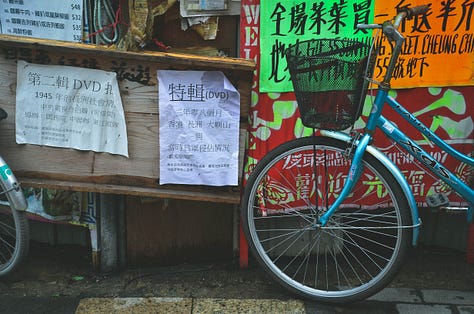



.
.
.
.



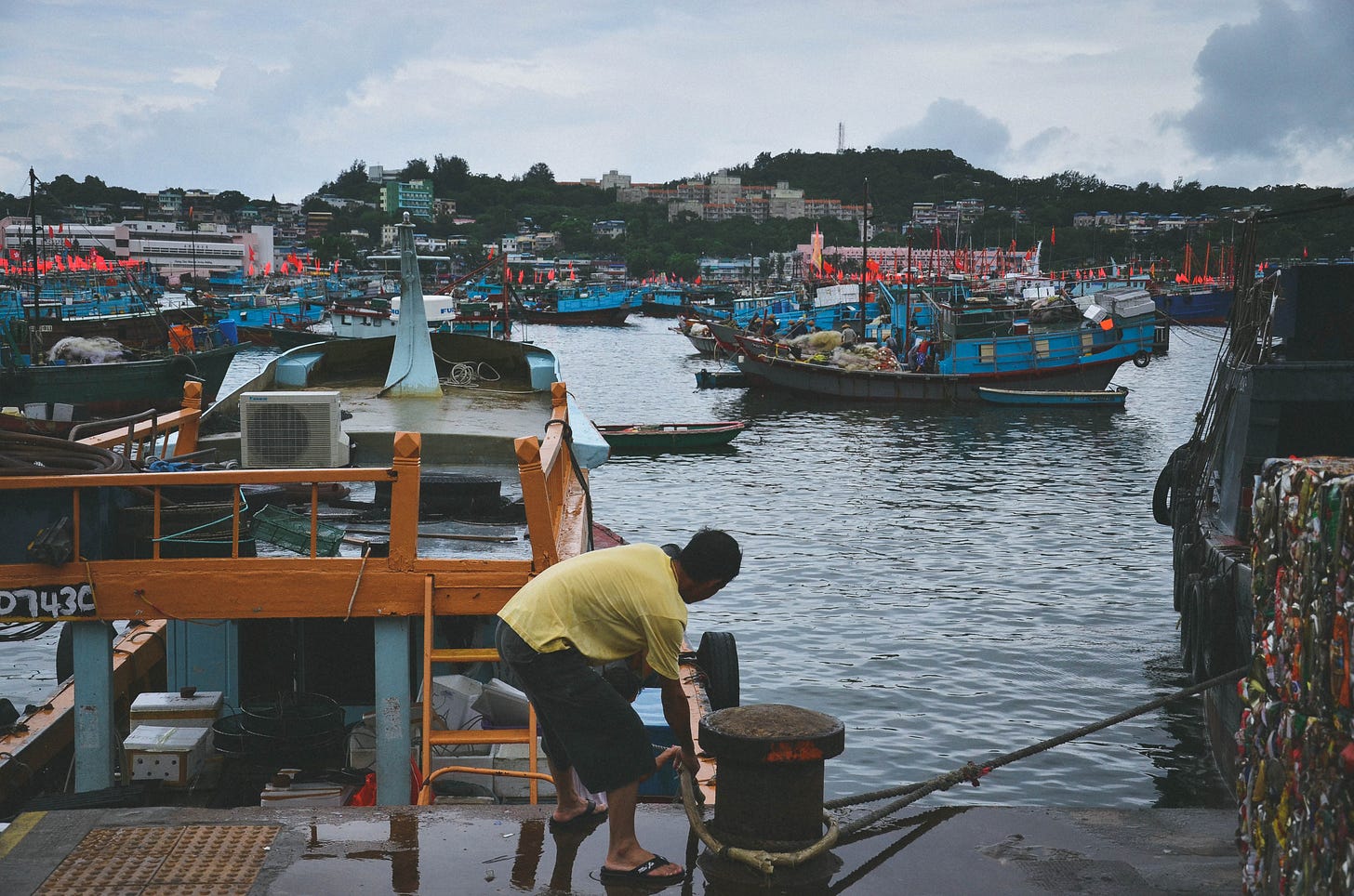
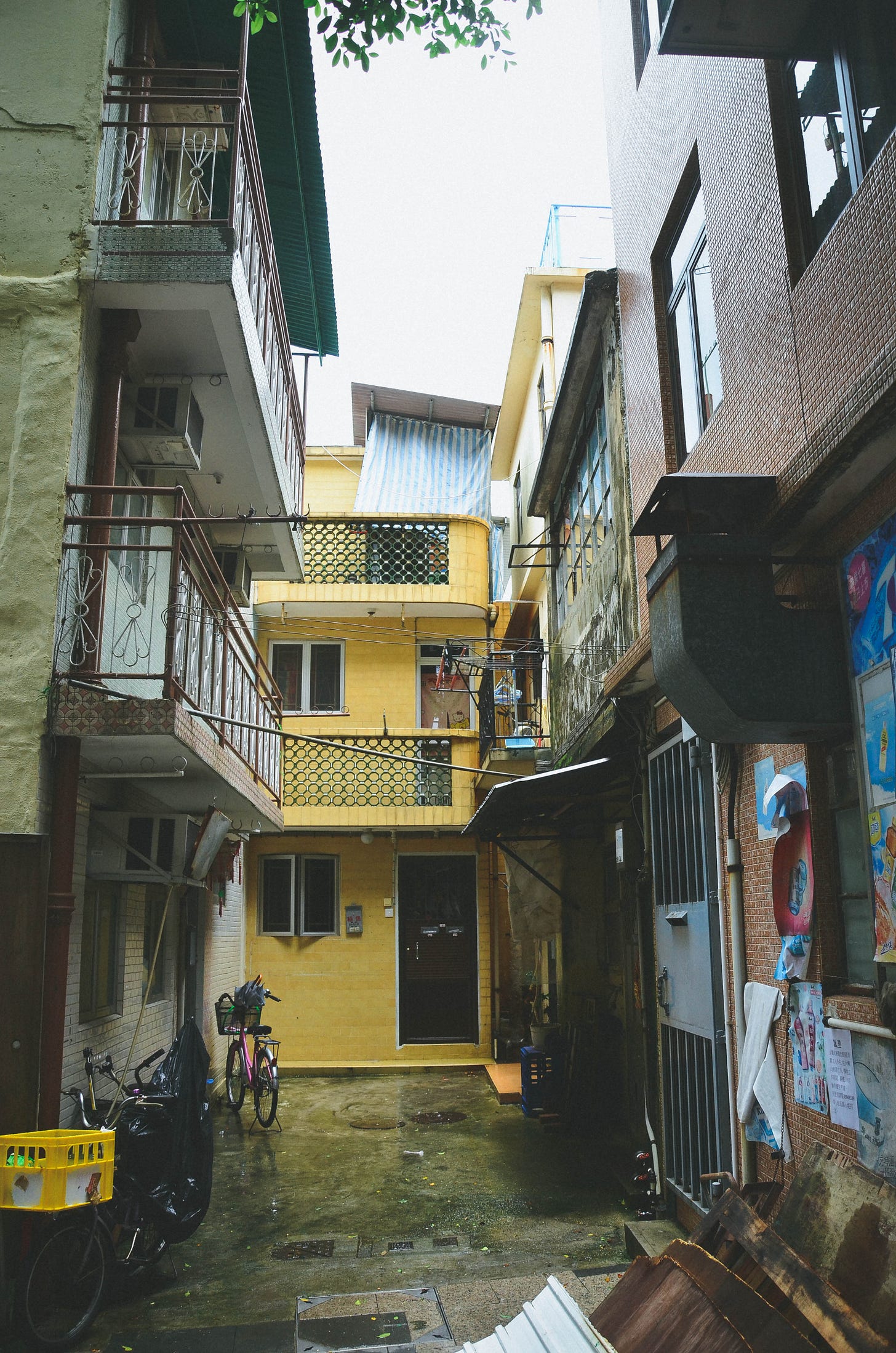
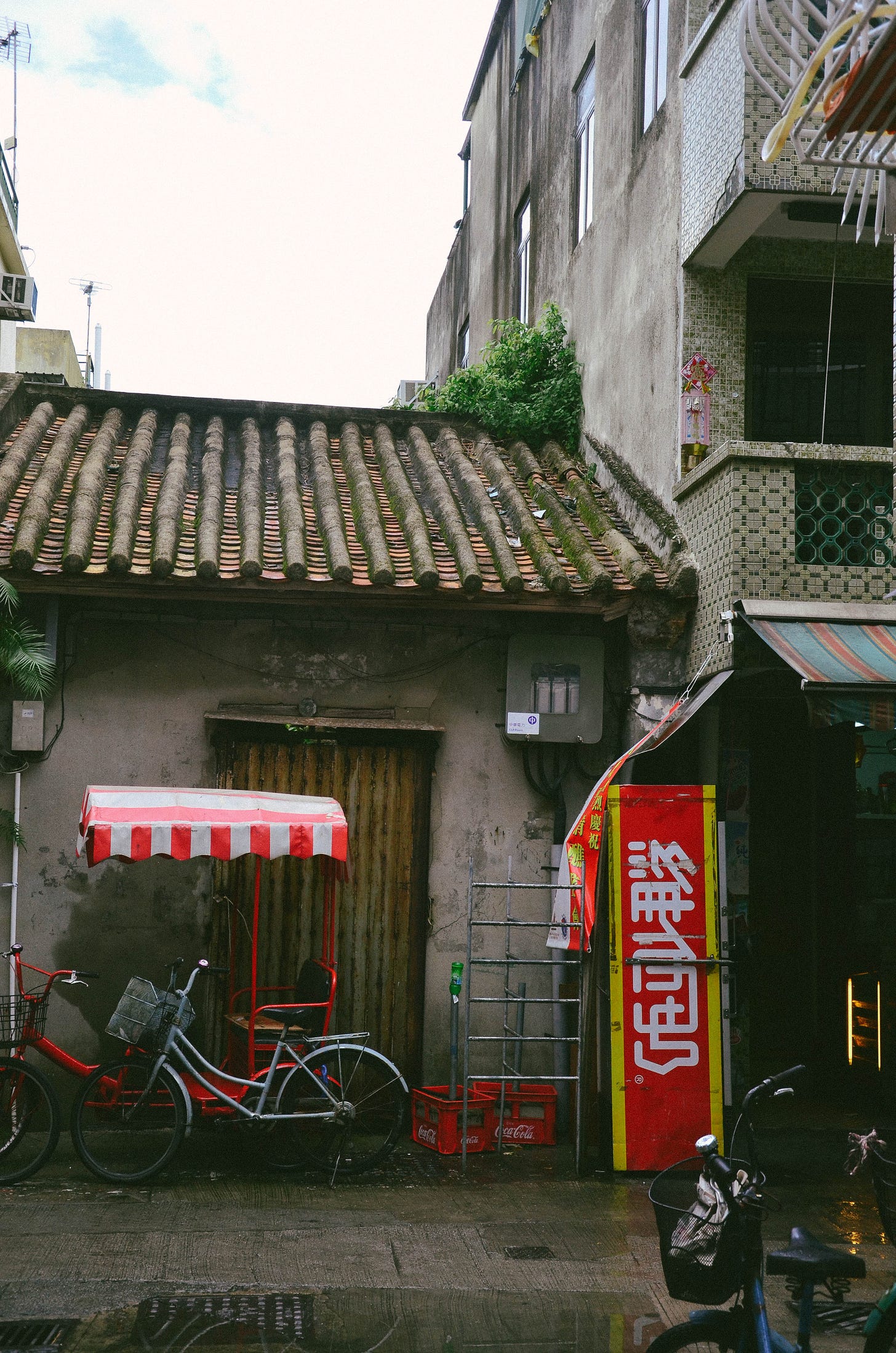
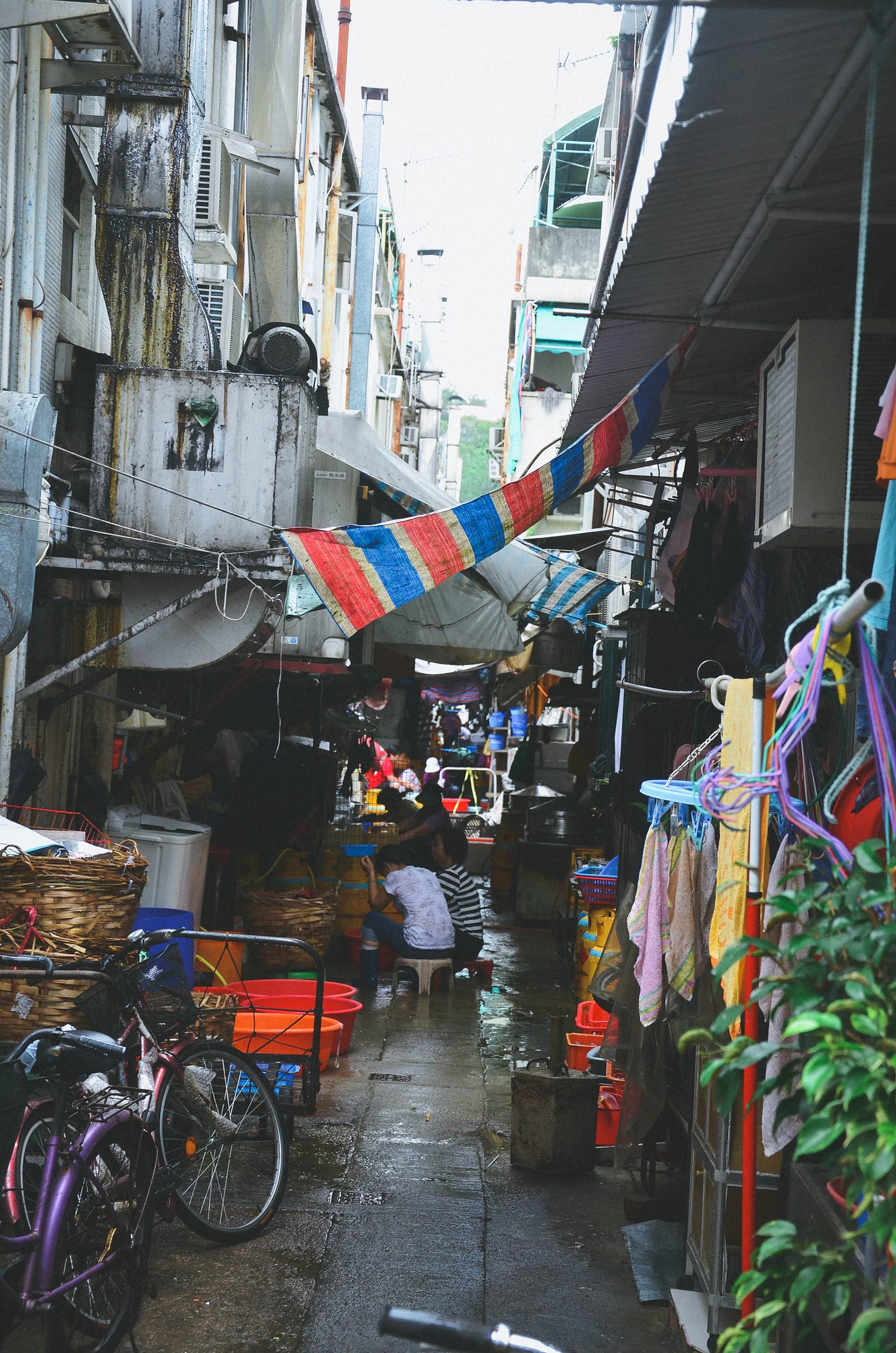
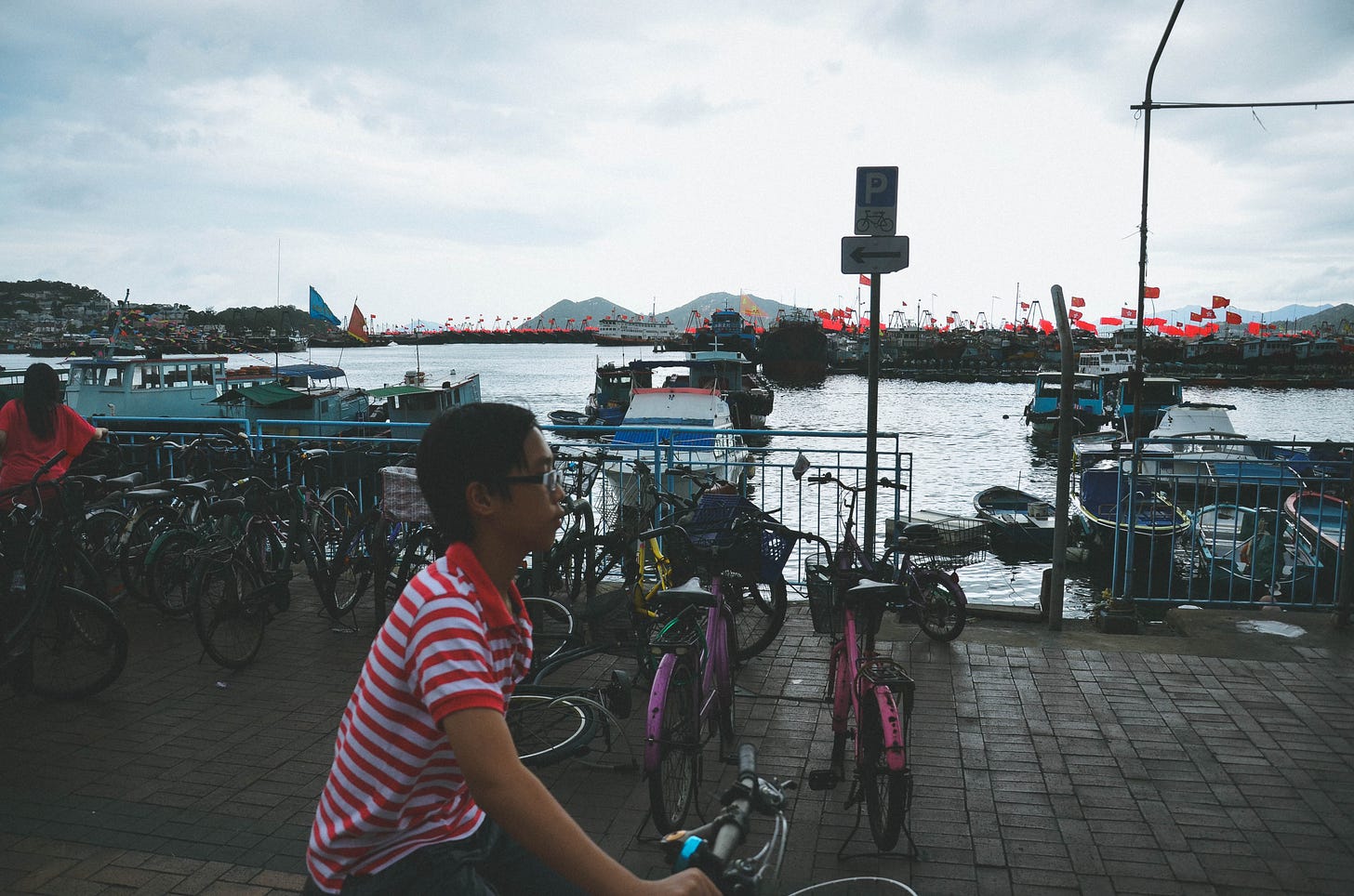
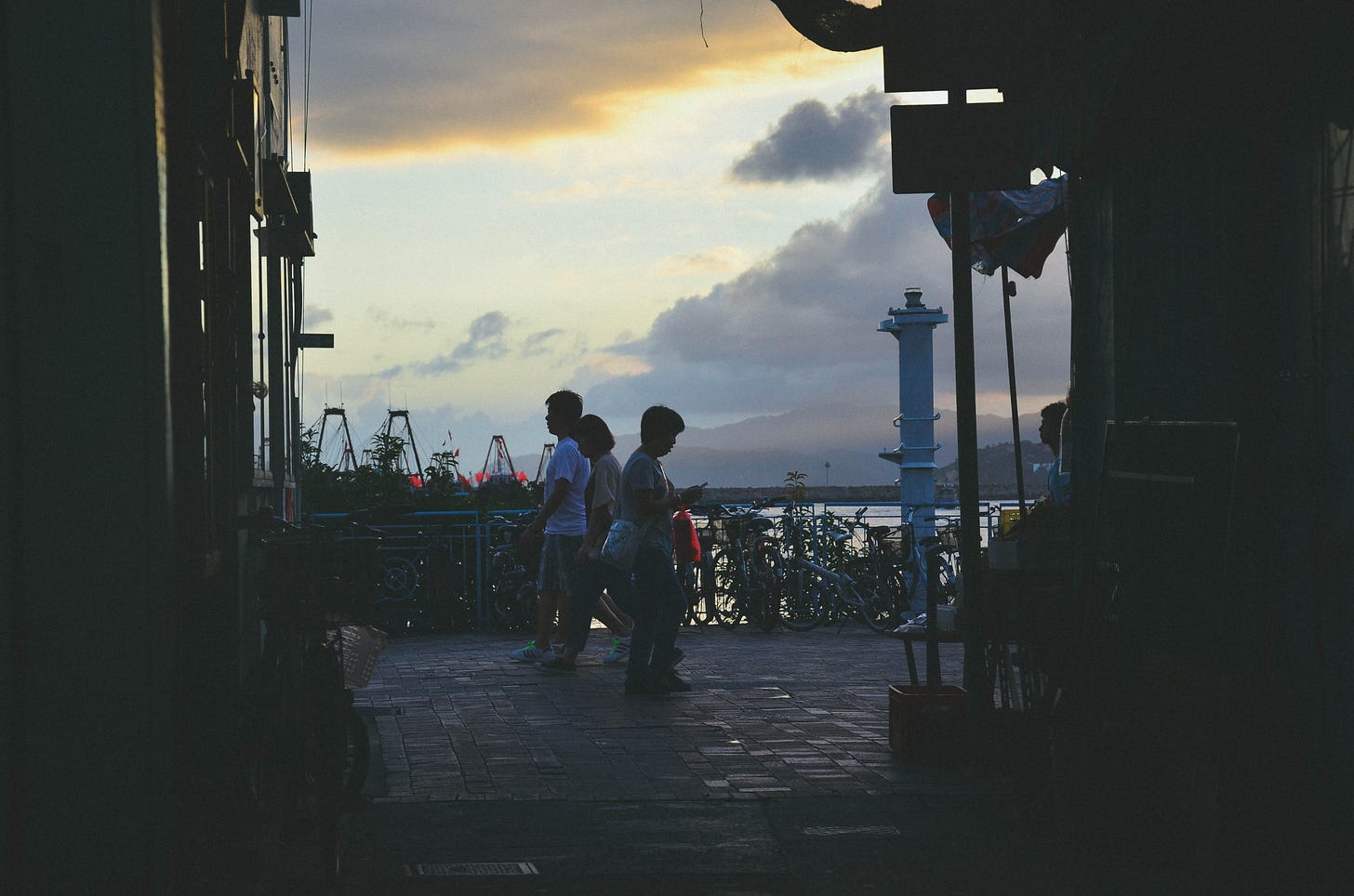
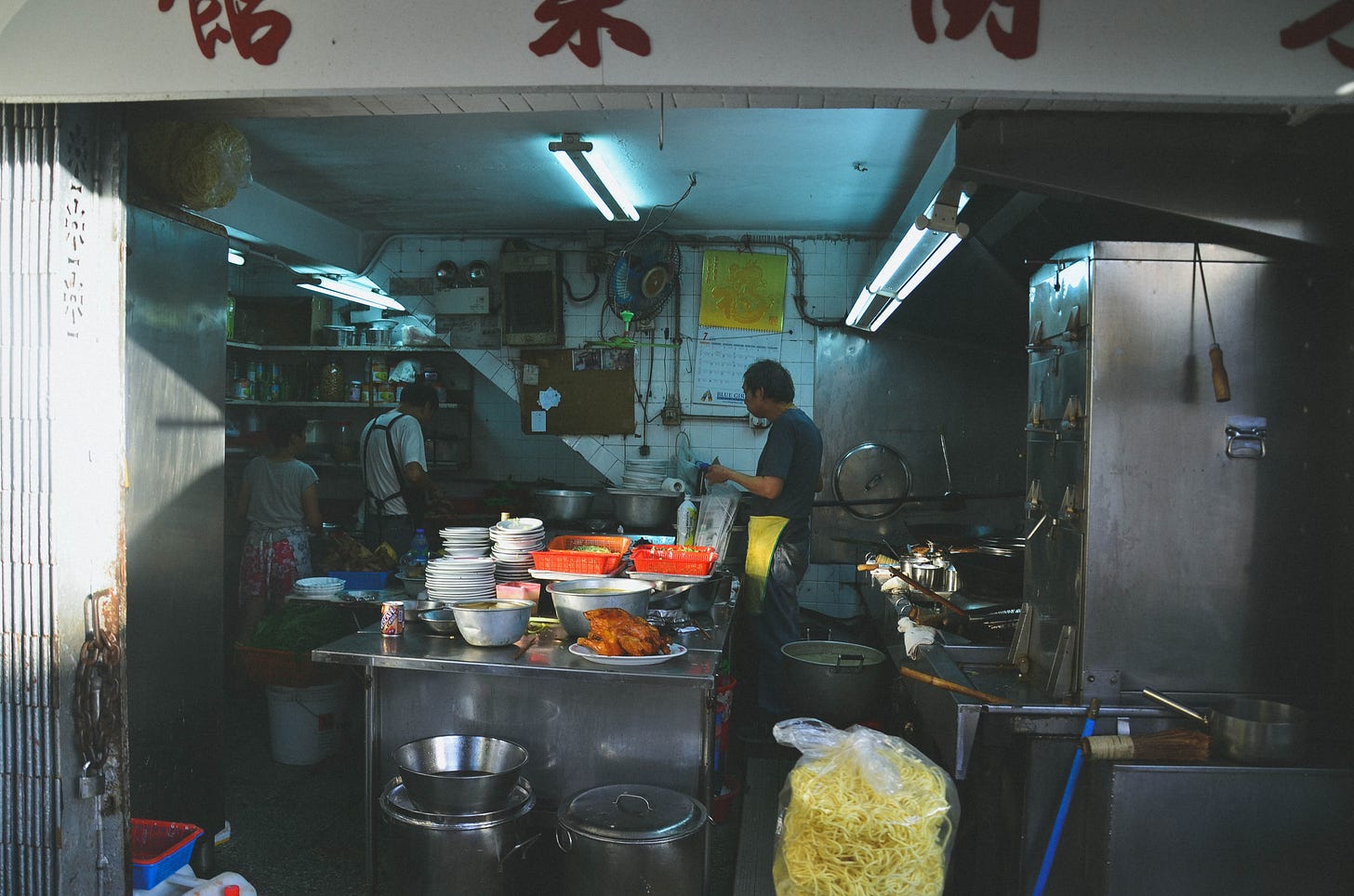
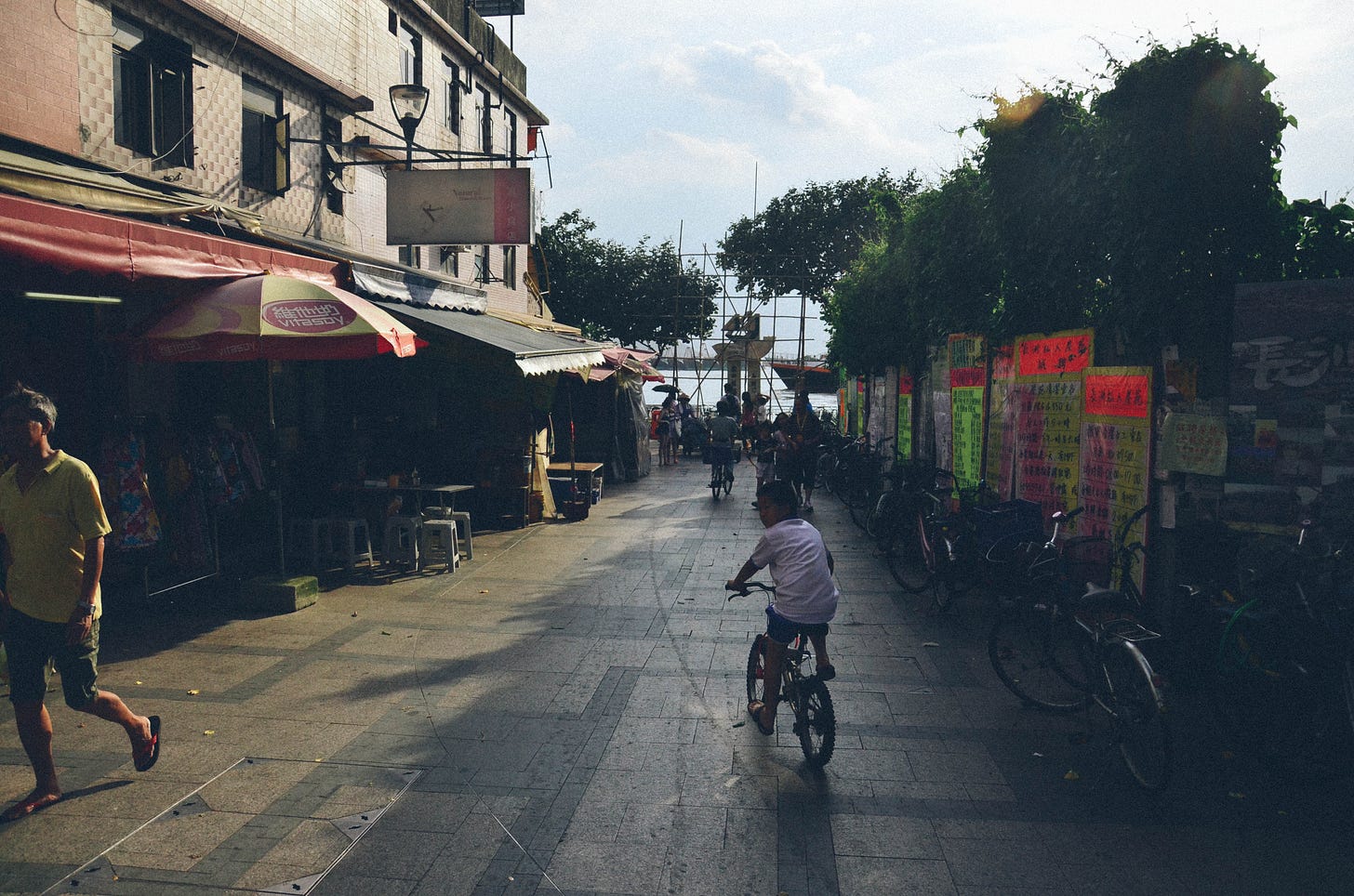
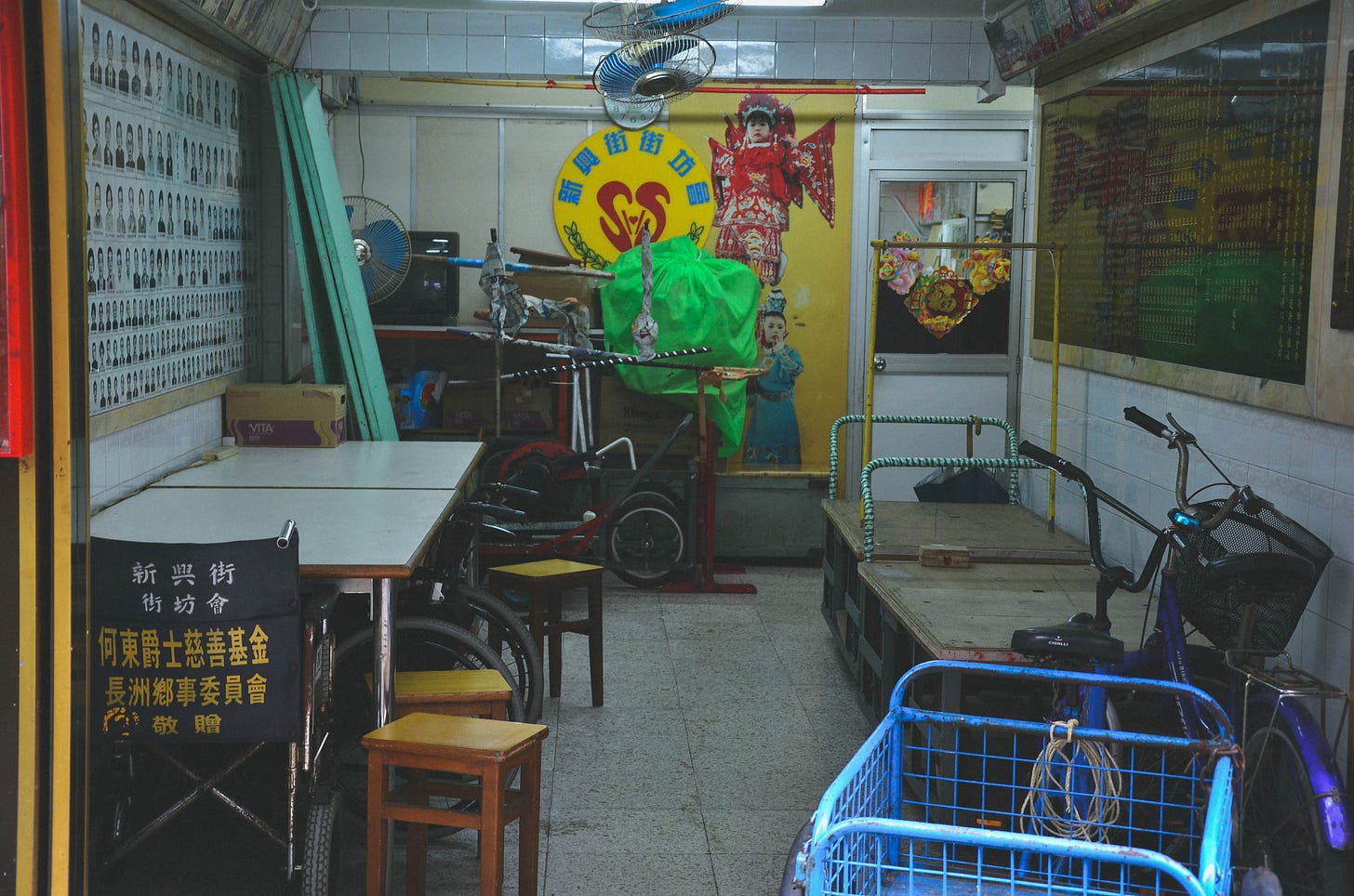
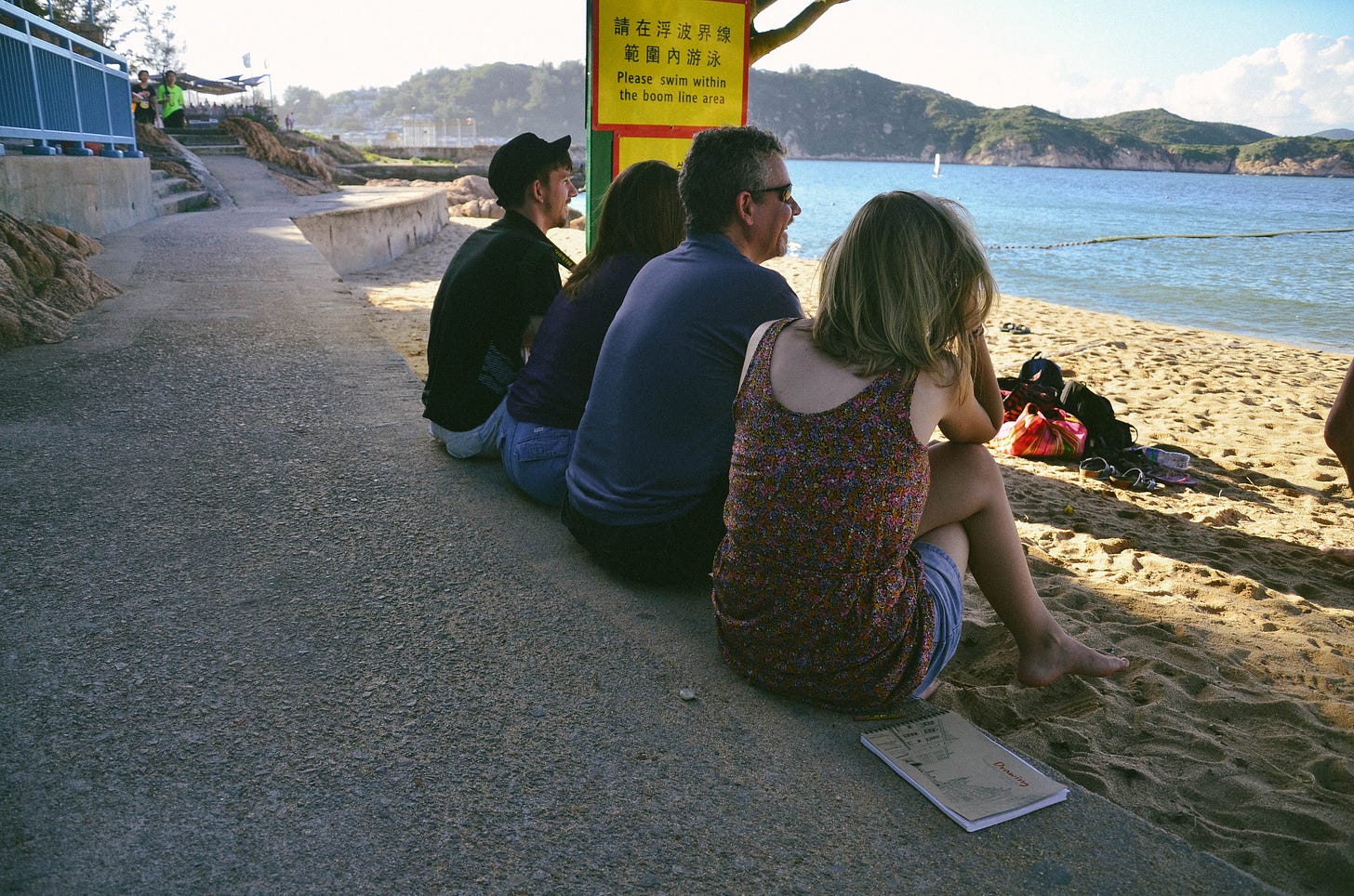

Have a great time back in Cheung Chau!
Adding Cheng Chau to my travel wishlist. Granted, I have a feeling I would be reeling from biking in the hot, humid environment in Hong Kong. But even just seeing places like this is so fascinating.
I know Mackinac Isle, Michigan is sort of iconic within the North American context for its adherence to a pre-auto way of getting around. But there’s also communities that are fully car-free in Canada! The ones I’m thinking of are on the South Coast of Newfoundland, old outports that feel like relics of another time. Especially because they aren’t overgrown with tourists (there’s no room to support mass tourism). Lots of people don’t know them, but they’re kind of a relic. Most other outports hugging Newfoundland’s coast eventually got car access after WWII, but these few still don’t. The only way to get to them is by ferry and the only way to get around them is on foot or bike, really. If you’ve never heard of them, look up Francois (pronounced France-way), Grey River, and Ramea in Newfoundland.